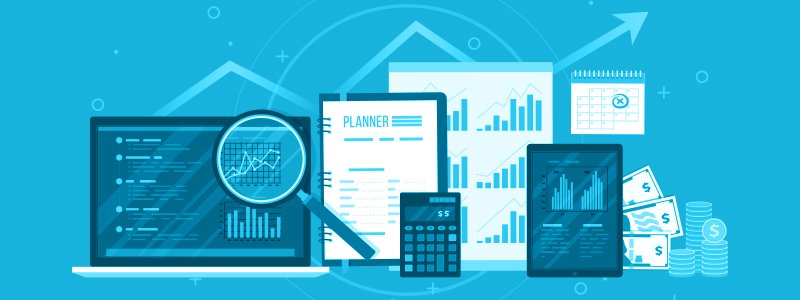A chart of accounts provides ecommerce businesses with the insights they need to maximize sales potential.
Organizing your ecommerce chart of accounts is critical for business success. If your ecommerce business sells physical products, it’s likely that you’re operating an inventory-based business.
Failing to remain aware of the relationship between inventory management and finances is a leading cause of failure in Australian ecommerce businesses — neglecting to keep track of the amount of capital spent on unsold inventory can cause serious issues in the operation of businesses of any size.
Maintaining an organized, accurate chart of accounts minimizes the risk presented by inaccurate inventory management and finance management.
What is a Chart of Accounts and Why Does it Matter?
- In simple terms, an ecommerce chart of accounts lists every individual account in the general ledger of a business. A chart of accounts summarizes all transactions, presenting a balance sheet of assets, liabilities, revenue, expenses, and equity:
- Assets include accounts receivable, inventory, equipment, cash, and physical assets
- Liabilities can include any accounts payable to service providers, suppliers, salaries, or taxes
- Revenue includes any money brought into an ecommerce business through sales
- Expenses can include a variety of costs or business spending over a specific time period, with a heavy emphasis placed on cost of goods sold, or COGS
- Equity refers to any stock or shares in a company held by owners, partners, or investors
Understanding the information presented in a chart of accounts, but it’s important to understand how to action the data it provides.
Calculating Profitability with a Chart of Accounts
Using the data presented in your chart of accounts, it’s possible to calculate profitability.
To calculate profitability, subtract the cost of goods sold from revenue — the result is the gross profits of a sale. Dividing the gross profit by revenue will then provide you with the gross margin.
Gross margin is an important data point for ecommerce businesses, as it allows business operators to assess the amount of profit generated from a sale compared to the total cost of the product.
Calculating Cash Flow with a Chart of Accounts
Cash flow is critical to the success of any ecommerce business. While it’s important to generate profit, the capital generated through sales is only meaningful when it becomes accessible.
Reliable and consistent cash flow allows businesses to ensure they are meeting expenses and are able to continue operation, as well as make forecasts for business purchases or investments. Assessing cash flow through an ecommerce chart of accounts can provide businesses with insight into the impact of sales on the balance sheet, breaking down investments, loans, and sales data points.
Key Takeaways
Maintaining an accurate, regularly-updated chart of accounts allows ecommerce business operators to capture insight into high-performing products, thereby facilitating accurate planning and forecasting.
An ecommerce chart of accounts is an essential tool that provides ecommerce businesses with the ability to adjust their business model to the dynamic online marketplace, enhancing the efficiency of business operation and streamlining the decision making process.
Managing an ecommerce chart of accounts for your business is an important step in following an effective business accounting strategy. For detailed guidance on ecommerce accounting, reach out to Fullstack for advice today. You may also find some of the following articles useful:
Ecommerce Accounting Basics: Making Profits Online
Was this article helpful?
Related Posts
- eCommerce Accounting: A2X Accounting Review
A2X is a powerful ecommerce accounting tool that can transform the way your business manages…
- Chart of Accounts: An Easy Set Up in Xero
In this article we show how to set up a chart of accounts in Xero…
- How to Automate your Accounts & Reduce Timespend
Welcome to the age of automation! Here's how to employ the power of automation to…
- eCommerce Accounting Basics: Making Profits Online
Every financially successful online entrepreneur understands their eCommerce accounting basics – we cover 10 of…

















